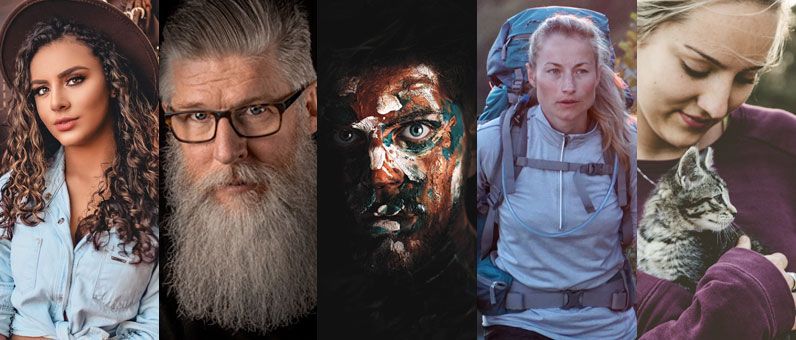The Secret to a Successful Brand Strategy: Brand Archetypes
Creating an Effective Brand is Hard Work!
Creating an engaging and successful brand is a challenging endeavor, filled with miss-steps and false assumptions. Most organizations wing it. They have their cousin's sister's roommate whip out a logo, throw up a website with a cool theme, and write a few blogs with some assumed keywords. This might work if you are selling used cars, but probably not the best approach if you are serious about developing an engaging brand that creates life long evangelists. Fortunately, there are many solid brand strategies for savvy brand managers. One of the secrets I have found is having an intimate understanding of your brand archetypes.
In my previous marketing business, we became aware of this powerful insight early on in the development of our brand. It had a powerful impact on our success and helped create a positive and highly influential brand to the demographic we served.
Think of brand archetypes as a way of gaining deeper emotional intelligence in regard to your business and your brand. The more you understand who you are as an organization, your strengths, weaknesses, and passions, the more successfully you can connect with your desired target audience.

So what are Archetypes?
First, a little backstory. Swiss psychiatrist Carl Yung originally defined archetypes. Jung understood archetypes as universal ancient psychological patterns and images we unconsciously identify with. These archetypes are imprinted and hardwired into our psyches. Today, Archetypes are commonly used in the fields of marketing, psychology, anthropology, and other social sciences. (To really geek out on Archetypes, check out Jungian archetypes.)
Archetypes are generally defined by 12 personalities, each with their own characteristics, values, attitudes, and behaviors. Savvy brands will anchor their communications and brand stories with archetypes that best speak to who they are and resonate with their ideal buyer personas or target market.
The 12 Brand Archetypes
The Everyday Guy/Gal is most fulfilled by helping others belong and fit into the group. Naturally empathetic, unpretentious, and resilient, they often demonstrate their common touch and can motivate others to try hard to do their best.
Caregivers are most fulfilled when they can make a difference for someone else. Naturally compassionate, nurturing, and dedicated, they enjoy demonstrating their supportiveness and can motivate others to provide better service or care.
Explorers are most fulfilled when they can seek out new approaches and perspectives. Naturally independent, authentic, and curious, they’re able to follow unique paths and motivate others to explore uncharted territory.
Lovers are most fulfilled by building relationships. Naturally appreciative, passionate, and committed, they enjoy creating consensus and motivating others to see and utilize their own special gifts.
Revolutionaries are most fulfilled when they can change something they feel needs change. Often, unconventional thinkers who can develop new, cutting-edge approaches enjoy challenging the status quo and motivating others to think differently.
Creators are most fulfilled by seeing new ideas take shape. Naturally expressive, original, and imaginative, they enjoy demonstrating their inventiveness and often are able to motivate creative thinking in others.
Magicians are most fulfilled when they can see a vision realized. Naturally intuitive, insightful, and inspiring, they’re able to perceive and appreciate multiple perspectives and motivate others to believe that anything is possible. They’re usually excited and challenged in times of great transformation and turmoil.
Heros are most fulfilled when they can rise to and overcome a challenge. Naturally determined, achievement-oriented, and focused, they enjoy demonstrating a winning attitude and often can motivate others to achieve their goals.
Innocents are most fulfilled when their lives are based on their deeply held values and beliefs. Naturally idealistic, optimistic, and hopeful, they often demonstrate perseverance in the face of obstacles and motivate others to trust that everything will turn out well in the end.
Sages are most fulfilled by finding the answers to great questions. Naturally intelligent, knowledgeable, and reflective, they demonstrate the value of thinking things through and motivate others to seek the truth.
Jesters are most fulfilled when they can use their ingenuity and wit. Naturally playful, spontaneous, and humorous, they enjoy light-hearted truth-telling and can motivate others to see the value of fun.
Rulers are most fulfilled when they can demonstrate leadership, orchestrate complex situations, and/or use their influence to make things work better. Naturally confident, competent, and responsible, they enjoy demonstrating their savvy and motivating others to maintain high standards.
At my previous marketing business, we included the development of brand archetypes in our brand discovery sessions with great success. We would identify a primary as well as two secondary brand archetypes and use them as the underpinnings of all imagery (logo, website, print) and content marketing communications (blogs, website content, social media, advertising).
Success Stories
While running my previous agency, We worked with a high-end fly fishing guide and outfitter in Silverthorne, Colorado. They reached out to us to overhaul their brand strategy. We initiated a brand discovery session with their leadership team, including the development of Brand Archetypes. We discovered their primary archetype was the Sage, with Caregiver and Everyman as secondary archetypes. The Sage archetype helped identify the mentoring aspect of their guides by providing deep insight and wisdom into the age-old art of fly fishing. The Caregiver and Everyman archetypes helped clarify their deep desire to care for and create down-to-earth relationships with their clientele in the pursuit of the big catch. With the help of archetypes, our client was able to get to the heart of who they are in a clear and defined way. What was initially a vague and undefined brand identity could now be communicated with maximum impact and clarity to its target audience.
Pitfalls
A common mistake when developing brand archetypes is the assumption you know what they are by just reading the archetype descriptions. When you develop them, make sure you use a professionally facilitated process especially if you have multiple stakeholders. This means conducting the discovery process with your complete leadership team present. This is critical.
A solid brand strategy requires a great deal of time, introspection, and planning. I’d highly recommend considering brand archetypes as apart of that process. I can guarantee you won't be disappointed with the results.
To learn more about Brand Archetypes. Give me a shout for a free consultation.









